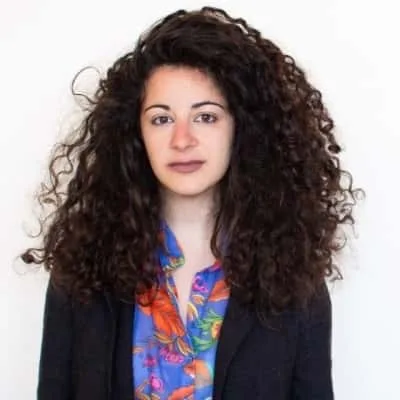Like many things, safety is a relative concept. Something that the 2008 financial crisis underlined is that even the biggest banks and financial institutions can find themselves in big trouble. A classic example is the 2008 government bail-out of the Royal Bank of Scotland (RBS).
Key takeaways
- Banks in the UK are regulated by the Financial Conduct Authority (FCA) and the Prudential Regulation Authority (PRA).
- The Financial Services Compensation Scheme (FSCS) protects deposits up to £120,000 in a fully licensed bank.
- You can compare savings accounts with FSCS protection in our guide.
Are my savings safe? The Financial Services Compensation Scheme
Let’s start with the basics: Even if our bank collapsed, most of us would get our savings back. This is thanks to the Financial Services Compensation Scheme (FSCS).
We have a longer guide about the FSCS but basically it guarantees that all money up to £120,000 held in an account from a fully licensed UK bank would be paid back to the account holder, even if the bank itself were to go bust.
So, if you have less than £120,000, you really only need to make sure that you hold your money with an institution that has a full UK banking licence from the Financial Conduct Authority (FCA).
Even if you are one of the lucky people who have more, you can just spread the money between different banks – as long as they aren’t part of the same institution – so that you never go over the FSCS limit. For banks in the same group – such as First Direct and HSBC, Halifax and Bank of Scotland or NatWest and RBS – the limit is £120,000 in total for money you’ve deposited in any of its brands collectively. So if you have more than this, pick a bank in a different group for anything above £120,000.
If you’re looking to 100% guarantee of your savings, the only bank able to offer that is NS&I. That’s because it’s part of the government and backed by HM Treasury, meaning every penny of your savings is protected, not just the FSCS limit.
Banking brands that share the same FSCS protection
| Licence holder | Banking brands |
|---|---|
| Bank of Scotland Plc | Halifax, Bank of Scotland, Birmingham Midshires, Intelligent Finance |
| Clydesdale Bank Plc | Clydesdale Bank, Yorkshire Bank, Virgin Money |
| The Royal Bank of Scotland Plc | NatWest, Royal Bank of Scotland, Ulsterbank |
| HSBC UK Bank Plc | HSBC, First Direct |
| Bank of Ireland UK | Post Office Money, Bank of Ireland UK, AA Savings |
| The Co-operative Bank Plc | Co-operative Bank, Smile, Britannia |
| Santander UK Plc | Santander UK, Cahoot |
| Lloyds Bank Plc | Lloyds Bank, Scottish Widows Bank |

"It may seem a daunting task to switch savings accounts. But by not doing so, you could be losing out on hundreds – maybe even thousands – of pounds in interest each year.
When inflation is high, the value of your savings becomes less in real terms. Essentially, what you can buy with the money sitting in your savings account now, is less than what you could buy a year ago. That’s why it’s important to earn as much interest as you can to minimise the effect of inflation on your savings.
While there may not be a switching service like there is for current accounts, it’s still easy to switch savings accounts. The first step is to compare the best rates available for your chosen type of savings account.
The next step is to check if the provider is protected by the Financial Services Compensation Scheme (FSCS). This means that your deposits are protected up to £120,000. So if the provider were to go bust, you could get your savings back. One thing to be aware of though, if you have multiple accounts with one banking group, these all contribute towards the £120,000 limit. You can check whether a provider has FSCS protection by looking for the logo in our comparison tables.
If you’re worried about sending a large amount of money at once, you can start by sending a small amount – say £1 – to check it arrives safely. Then you can transfer across your remaining savings balance. However, make sure to check your new savings account allows multiple deposits – some fixed-rate accounts won’t allow you to make further additions.
Finally, if you’re worried about not being able to access your savings, then it’s probably best to go for an instant access or easy access account. You may get higher rates with a fixed-rate bond, but your money will be locked away for the duration of the term and you won’t be able to access it."
Credit ratings
But, FSCS aside, if your bank were to go bust, it still wouldn’t be pretty (it might take some time before the FSCS kicks in, for example). So if you want to know how solid your bank is, there are a few criteria you can look at.
One is credit ratings. Ratings agencies build their credit ratings by making careful judgement calls on how risky it is to lend money to a certain entity (it can be a bank, a company or even a country).
In practice, the higher the rating, the less an institution is considered likely to default. The 3 leading ratings agencies are Standard & Poor’s, Moody’s and Fitch.
If your bank has a high credit rating, you can be reasonably confident of its financial health – with a caveat: like all the other criteria we are about to look at, credit ratings don’t give you 100% certainty that everything is fine. Nobody can do that.
Capital ratios
Capital ratios are another good indicator of a bank’s financial health. The capital ratio tells you what percentage of the bank’s capital is held in so-called Tier 1 Capital, against the total risk-weighted assets.
Tier 1 Capital refers to a bank’s “core capital”, such as cash, that remains once you take away all the potential liabilities.
The higher the capital ratio, the bigger the safety net the bank can fall on if things go wrong. According to Basel III (an international regulatory accord for the banking sector introduced after the financial crisis), the minimum capital ratio banks are required to hold is 8%.
Credit Default Swap rates
We know, all this jargon is starting to sound vaguely scary. But it’s easier than it looks, we promise.
In a nutshell, a Credit Default Swap (CDS) is a sort of insurance policy that an investor can take out against the risk that a company (in our case, a bank) will default on its debt. You pay a premium and if the company does go bust, you get some money in return.
CDS rates, or premiums, tell you something about the financial health of a bank. It’s just like with your car insurance: The more likely your insurer thinks you are to cause an accident, the higher the premium will be.
Like credit ratings, CDS rates give you an indication of how likely a bank is to go bust. Or more accurately: They give you an indication of how likely the CDS provider believes the bank is likely to go bust. Just like with credit ratings, things can always go wrong.
Safe alternatives to a savings account
If you are looking for a safer place to store your savings, you are out of luck. Savings accounts are considered one of the safest options for savers, thanks to the FSCS.
Most other options imply some form of investment, and are riskier by definition. For example, you may think that buying property is safer; but actually, there are a tonne of other risk factors that mean that you can get back less than you invested if you buy a house with your savings (the value of the area could diminish; there could be a fire; and so on).
However, investing options that are considered comparatively low-risk are gilts. Gilts are bonds (a type of debt) issued by the UK government to fund its spending. These are considered pretty safe because the government has never defaulted on its debt.
Peer-to-peer lending can offer higher returns, but on the flip side is still not as safe as a savings account.
Bottom line
Before choosing a savings or current account, it’s well worth checking the provider’s financial health and ensuring that your funds will be protected under the FSCS. Remember to check banking brands too and that you have no more than £120,000 saved with each one so that you’ll still be covered.
Frequently asked questions
Sources
More guides on Finder
-
Raisin promo codes
New to Raisin? See if you can keep some more money in your pocket with our promo codes and special offers.
-
Which banks are cutting interest rates?
Which banks are passing on interest rate cuts to their customers? Discover the upcoming rate drops by banks and savings providers in our table.
-
Revolut savings review
Revolut now offers savings accounts to its customers, known as Savings Vaults. You can get interest of paid daily, but the rate depends on which level of account you have. Find out whether Savings Vaults are a good option for your spare cash.
-
Working from home statistics: How many people work from home?
Our research found that 41% of Brits work from home at least some of the time. We look at who is working from home and how commuting costs may impact working patterns.
-
What is the average savings interest rate in the UK?
High inflation could be making your savings accounts lose value in “real terms”. We look at historical savings versus inflation rates.
-
Savings statistics: Average UK savings in 2025
Our 2025 savings statistics show the average person in the UK has £16,067 in savings but 1 in 6 Brits (16%) have no savings at all.
-
Best savings accounts for December 2025
Find out more about the different types of savings accounts on offer.
-
How much money should I have in savings?
See how much money people your age have in savings, and learn how to boost your savings balance if it’s below average.
-
Compare savings accounts with compound interest
We look at the definition of compound interest, what it concretely means and how you can use it to grow your savings more quickly.
-
Compare high interest & high yield savings accounts
Kickstart your savings plan with a high interest savings account.


